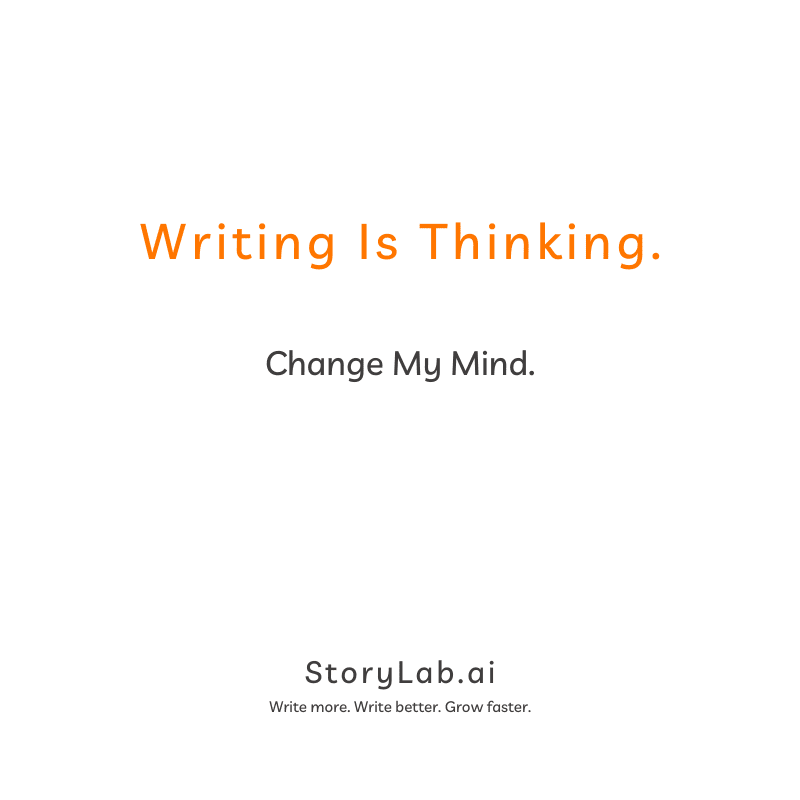Mindful Writing. The Secret Ingredient to Supercharging Growth.
I Learned the hard way —so you don’t have to.
Last year was a tough one for this writer.
But there was also a bright side. During covid-19, lockdowns, unemployment and struggling to reinvent myself as a writer, storytelling consultant and coach, I learned something new and incredibly important about writing.
I learned something that had eluded me during my entire 10-year writing career. Something that had been slowing my growth and effectiveness as a writer — and as a human being.
My wife — who is my number one fan, greatest critic, and most important editor and coach — kept reminding me of this thing and trying to get it across to me in a thousand ways. It was frustrating. Maddening.
Until one day it clicked.
I needed to be much more present, not only in my thoughts but also in my feelings, when I wrote, spoke, and generally communicated. As a human being, and as a writer and professional this understanding has helped me kick-off a whole new period in my personal growth journey.
A journey which, at the present moment, led me from unemployed struggling writer to a writer who;
- Won a hacker noon award for “Mental Health advocate of the year” with his latest book “Life Beyond the Touch Screen”;
- Is part of the founding team of a brand spanking new AI-content creation start-up;
- Has a new parttime job at one of the top-10 growth hacking agencies in the world;
- Has more clients for his Brand Storytelling services than he can manage;
- And has two new books coming out somewhere around the last quarter of this year.
Oh yeah, and I’m now also happily married.
The importance of mindfulness in writing and in life
I want to talk to you about the importance of Mindfulness in writing. I can’t promise that you’ll get the same results in a year as I have, but I can promise you this: more mindfulness in your writing improves your writing skills, better connecting, and more growth for you as a writer. And as a person.
If these are things you’re interested in — and how could you not, I know — please do yourself a favor and read on.
Mindfulness — because writing is thinking and feeling

Writing is thinking. Why?
Because the whole purpose and practice of writing is to organize your thoughts and feelings around a given subject in such a way that they become clearer to you, and can be clearly communicated to someone else. Through Storytelling.
The goal of that communicating, in turn, is that you ultimately inspire, convince and/or help someone change something in their opinions, attitudes, or knowledge. Which leads to changed behavior.
That change in behavior then having as its ultimate goal to help that person get closer to achieving their goals — and often at the same time helping that person help you achieve your goals.
So that means, in order to write well, to truly connect with your reader and truly connect with your goals — you need to really think, and really feel why, how and what you’re writing.
Here’s how you apply this mindful approach to writing:
1. Mindful journaling
I always tell people that to grow more — either as a storyteller or as a writer — they should write more.
That doesn’t necessarily mean they also need to publish more content. At least not in my view.
Here’s where the “organizing your thoughts and feelings around a given subject in such a way that they become clearer to you” part comes in.
Mindful journaling is like tidying up your internal space.
Mindful journaling can be a brilliant way to train your thinking and feeling muscles. And to organize and calm your mind. I advise my students to do an extended journaling exercise once every week — to just organize the thoughts and feelings going around in body and mind.
And I advise them to use a version of my Daily Purpose Aligned Journaling method to stay on track with what matters and own the day, every day.
More on that, later.
Now, after the very useful practicing of mindfulness in writing for your private audience of one, here’s how to apply mindfulness in writing for an audience of 1 +n:
2. Mindful outlining and writing
When you’re writing for an audience, 99% of the time you have a certain goal with that writing. I strongly encourage my students and anyone who wants to write better, to make that goal as clear, specific and explicit as possible before you actually start to write.
What is it you want this story to achieve for your audience? What is it you want to help them do, know, understand, or change?
And what is this story going to help you achieve?
Think about this, and write it down.
But before you do, and in order to do that — think about what it is you want to actually say about the subject you’re writing about. And why you want to say it.
What is the main thought you want to express about your subject?
And what is the connected feeling?
If you can answer these, you’re off to a great start for your story outline. Now all you have to do is figure out which two or three connected thoughts, facts, or anecdotes you have to share in order to get your main thought across. And you’ll instinctively know how to write and how to trigger your audience because you know how the subject and your ideas around it make you feel.
If you know what you feel, it becomes ten times easier to make your audience feel something about your writing. And stories that are felt, are the same stories that are remembered, shared, and that inspire people to act.
When you’ve outlined your story in this way, all you have to do is connect the dots. let your fingers reign free on the keyboard. Write. As fully present and as freely as you can.
3. Mindful editing and gathering & implementing feedback
When — and only when — you’re done freely writing, it becomes the time to edit. Polishing. Making your first draft a great story.
Here’s the main thing you should look for when you edit any story:
From the standpoint of your audience, as well as you can imagine it: Is the main thought of this story clear, and is the feeling I wanted to connect to this story embedded in it?
You guessed it, here you will work your mindfulness and empathy muscles as you try to think and feel from the viewpoint of your intended reader or listener.
I promise, these questions are far more important in editing for a great story than the questions of grammar, spelling, and what exact words to use. Although you don’t wanna miss those either, of course.
Finally, to gauge the quality and effectiveness of your story, to improve it, and to improve yourself as a storyteller and human being: look for reactions and explicitly ask for feedback from your intended audience. And when you do that: be mindful. Not only of what they’re telling you, but also of how it’s making you feel and what thoughts come up.
These insights are the ones that help you understand your own thoughts and feelings even better. Sometimes your gut-reaction to someone’s comment on something you wrote can uncover something about your personality or views that you had never even thought about before.
And guess what? That will make you a better writer. And a better human.
Mindfulness in writing. Practice it, my friend. And become better every day.
Top AI Marketing Generators
Author bio:
 Erwin Lima: What inspires Erwin is helping people, teams and brands to become the best version of themselves. Guiding them with curiosity, empathy, and Growth Storytelling.
Erwin Lima: What inspires Erwin is helping people, teams and brands to become the best version of themselves. Guiding them with curiosity, empathy, and Growth Storytelling.
Over the past 10+ years as a copywriter, author, consultant, and coach, he’s helped dozens of Brands, Teams, and individual human beings to grow their sense of motivation and focus, but also their reach, engagement, and revenue— through the power of their own story. You can find Erwin on LinkedIn and on his website.
Master the Art of Video Marketing
AI-Powered Tools to Ideate, Optimize, and Amplify!
- Spark Creativity: Unleash the most effective video ideas, scripts, and engaging hooks with our AI Generators.
- Optimize Instantly: Elevate your YouTube presence by optimizing video Titles, Descriptions, and Tags in seconds.
- Amplify Your Reach: Effortlessly craft social media, email, and ad copy to maximize your video’s impact.